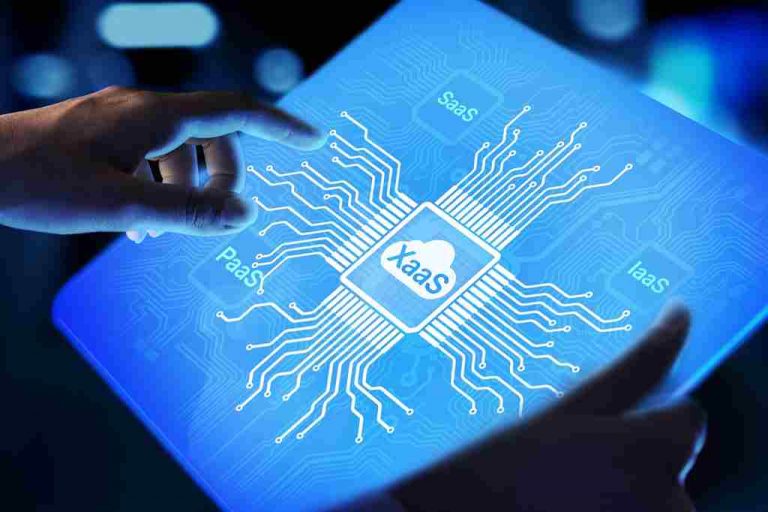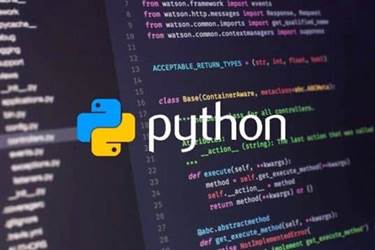Distinction Between Steady Integration And Steady Delivery
A human decides if a launch candidate shall be additionally pushed to manufacturing. Release candidates that don’t reach manufacturing are still saved as an artifact if they have to be recalled sooner or later. While the cloud can certainly help with all these necessities, there’s a sure stage of self-discipline required within the software program team (both builders and operations) so as to actually embrace Continuous Delivery. Now that we now have seen what “Integration” means, it is very simple to know what “Continuous Integration” entails. As the adage goes, “if one thing is painful, do it more usually.” Continuous Integration is actually the repetition of the combination step with a high frequency to alleviate its pain. And the most obvious way to do it frequently is to combine after EVERY characteristic merge (instead of ready earlier than an official launch is announced).

This system minimizes downtime during the deployment of a new implementation (and even otherwise). In case of downtime on one server, users are simply routed to the other server. The new code can then be constantly integrated with the existing build code. Continuous integration additionally emphasizes automation of testing for detecting bugs and performance issues each time new code is built-in. This process ensures full development of the product and totally prepares it for deployment.
Join The Virtual Devops Summit!
The point of CI is to ascertain a software-defined lifecycle that decreases the trouble required for construct and integration. Continuous integration also ends in the detection of errors in code in the early levels. Implementing CD requires modifications to workflows, dedication to automate processes, and alter in operational tradition. This can impact a company’s health care and can take up plenty of a company’s power, time, and energy.
Now that we have understood let us see how these three practices work collectively and the way they differ. It won’t go nicely with applications that still use and rely on a legacy technology stack. Surprisingly, as much as 43% of banking applications are still programmed in COBOL. Time and energy are required to develop suitable and steady CI automated and test procedures. CI instantly alerts the DevOps team when a defective bug or error condition has been introduced into the code base. Let’s take a extra in-depth look at these ideas and the way every contributes to a business’s objectives of steady innovation.
If the complexity of those definitions is something to go by, it’s clear that the main challenge for teams hoping to introduce CI/CD is upskilling. If you want to study more about CI/CD and how to use it on your Salesforce releases, check out Gearset’s free e book CI/CD for Salesforce. It’ll get you over the primary hurdle of understanding CI/CD and help you lay the foundations for a successful improvement course of. And after all you presumably can study more about all issues Salesforce DevOps, together with CI/CD, on DevOps Launchpad. Continuous integration (CI) and steady supply (CD) are subsets within the bigger DevOps umbrella—put simply, these are the 2 core processes that allow the DevOps methodology.
To that finish, the aim of steady supply is to have a codebase that is all the time prepared for deployment to a manufacturing environment, and make positive that it takes minimal effort to deploy new code. In fashionable software growth, the objective is to have multiple builders working concurrently on completely different features of the identical app. However, if a corporation is ready up to merge all branching source code collectively on at some point (known as “merge day”), the resulting work may be tedious, handbook, and time-intensive. That’s as a result of when a developer working in isolation makes a change to an application, there’s a chance it’ll battle with completely different adjustments being simultaneously made by other builders. This means testing every thing from classes and performance to the different modules that comprise the whole app.
Any developer/QA/Ops who’s acquainted with one practice will, virtually inevitably, be acquainted with the others. Continuous Testing in DevOps helps discover important bugs in the preliminary stages itself to save the price of bug fixing in later stages. CI/CD, Agile, and DevOps are probably the most generally used phrases in software program development and testing circles. People typically wonder how DevOps is different from Agile or the difference between CI and CD. CI/CD pipelines have turn out to be a hot subject within the Salesforce ecosystem, with 82% of Salesforce teams working to implement them, according to the 2022 State of Salesforce DevOps report. What’s spoken about less often, though, is a transparent definition of both ‘CI’ and ‘CD’ and an evidence of how they differ — don’t fear, we’ve received you lined.
Ansible Automation Platform additionally integrates with Red Hat Advanced Cluster Management for Kubernetes, allowing you to orchestrate Kubernetes clusters inside your CI/CD pipeline. You can even use the human-readable automation language to more easily construct and keep Red Hat OpenShift operators. The major problem right here is the one “integration” part that occurs at each product launch. This is the pain level of the workflow and it prevents the staff from having stress-free releases.
What’s Steady Integration (ci)
Navisite is a trusted IT services associate for mid-market and smaller enterprise companies. We assist our clients maximize business value and accelerate digital transformation with a complete portfolio of enterprise software, data administration, security and managed cloud providers. CI can be viewed as a first step and CD as the second for creating and deploying code.

This permits users to revert to the previous construct version in case any problems arise within the current one. Tools similar to Gradle, Jenkins, AWS Code Build, Azure Pipelines, and Travis CI assist the construct stage. 2) Next comes the build stage the place the source code is infused with its dependencies and an executable improvement instance is created. Software builds, build artifact dealing with, and different variants of buildable objects, like Docker containers, are dealt with in this stage. If a construct fails at this stage, it would indicate a elementary drawback with the code.
Ci Vscd: Key Distinction Between Steady Integration And Steady Supply
To implement these methodologies successfully, you might want to consider using one of many top 20 steady integration instruments. Red Hat Ansible® Automation Platform contains all the tools you have to implement automation across your organization, together with an event-driven answer, analytics, and pre-built content collections. With its common YAML-based language and desired-state strategy, you ought to use the same automation content for everyday operations in addition to your CI/CD pipeline. Every change that passes the automated tests is routinely positioned in production, resulting in many production deployments.
This makes it much easier to continuously receive and incorporate user feedback. Taken collectively, all of these connected CI/CD practices make deployment of an application much less risky, whereby it’s easier to release adjustments to apps in small pieces, somewhat than suddenly. However, as a result of there is not any handbook gate on the stage of the pipeline earlier than production, steady deployment depends closely on well-designed test automation. This implies that continuous deployment can require plenty of upfront funding, since automated exams will need to be written to accommodate a big selection of testing and launch levels within the CI/CD pipeline. Continuous supply automates the discharge of validated code to a repository following the automation of builds and unit and integration testing in CI. It’s an answer to the problem of poor visibility and communication between dev and enterprise teams.
- Although testing, particularly automated testing, is linked with CI, it isn’t a requirement.
- Some organizations balance this by utilizing steady deployment as a half of a classy progressive supply strategy.
- An organization can continuously integrate its codebase while nonetheless releasing its code packaged in giant releases.
- A DevOps engineer has a singular mixture of skills and experience that allows collaboration, innovation, and cultural shifts within a corporation.
Containerization instruments corresponding to Docker and Vagrant assist scale up and down instances softly, as well as guarantee consistency throughout improvement, staging, testing, and manufacturing. 2) The steady integration stage includes the event of code for new performance being built and built-in with the prevailing code. Once all of the commits are constructed, problems can be detected early in this stage.
By Staff Perform
After every function is merged to the mainline branch, the application isn’t only tested for correctness, however additionally it is packaged and deployed into a testing setting (that ideally matches production). Notice the lack of stick figures (that represent handbook steps) in the previous illustration. These adjustments are validated via the creation of a build that’s subjected to automated tests.
A DevOps engineer has a unique mixture of abilities and expertise that enables collaboration, innovation, and cultural shifts within a company. Teams may want to consider managed CI/CD instruments, which are available from a wide range of vendors. The major public cloud providers all provide CI/CD options, along with GitLab, CircleCI, Travis CI, Atlassian Bamboo, and plenty of others.
Programmers are working in a one-to-two-week dash, rather than a months-long growth of an replace. So, updates can come to programs every few weeks, quite than one giant annual release cycle. Using automated software program, the code will deploy to all servers, pause them, push the code out, make certain ci/cd monitoring it landed accurately, then turn them again on—all in a seamless means for users. To put it simply continuous integration is part of both continuous supply and steady deployment.
Continuous integration (CI) is practice that entails builders making small modifications and checks to their code. Due to the size of necessities and the variety of steps involved, this process is automated to guarantee that groups can construct, take a look at, and bundle their purposes in a dependable and repeatable way. CI helps streamline code modifications, thereby increasing time for builders to make changes and contribute to improved software. Continuous Deployment is a software program growth technique where each code change undergoes an automated journey by way of a series of exams and inspections earlier than being mechanically released into the manufacturing setting.
Ci/cd And Accelerating The Feedback Loop
However, it is important to exercise caution and implement Continuous Deployment solely when growth and IT teams strictly adhere to production-ready practices. For instance, unit checks can be triggered to make sure code nonetheless executes as meant and code protection stays https://www.globalcloudteam.com/ above 75%. Automated builds confirm that your latest modifications are deployable to a Salesforce org, work as meant, and play nicely with different customizations in your org. Again, each team will differ by which automated checks they go for in their CI process.